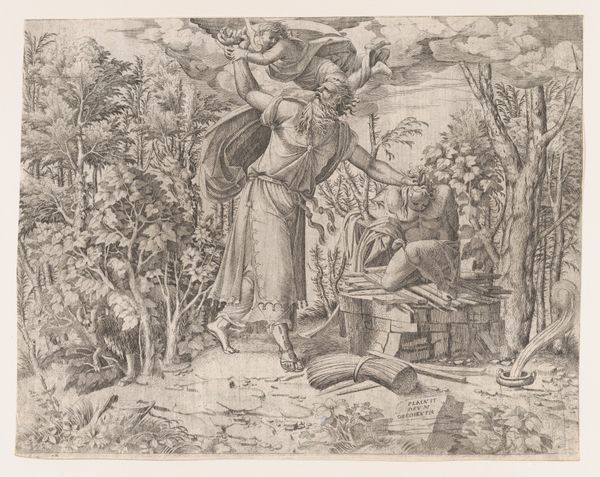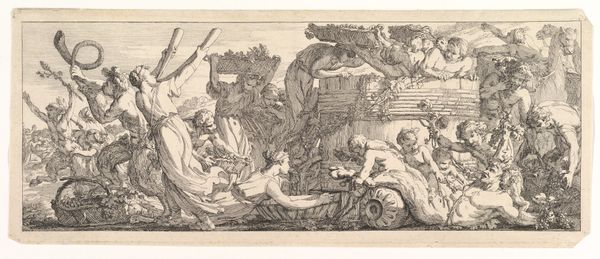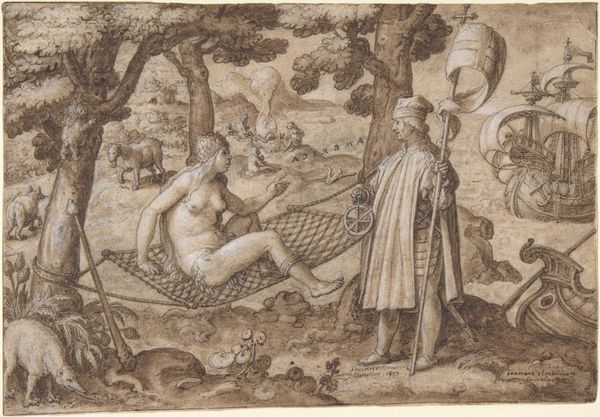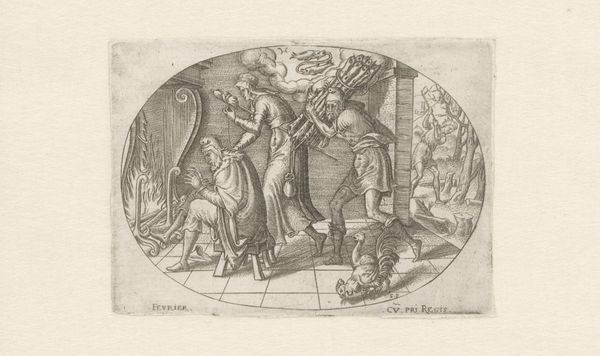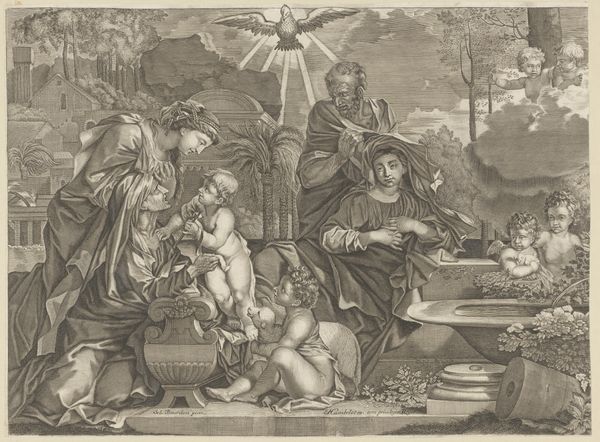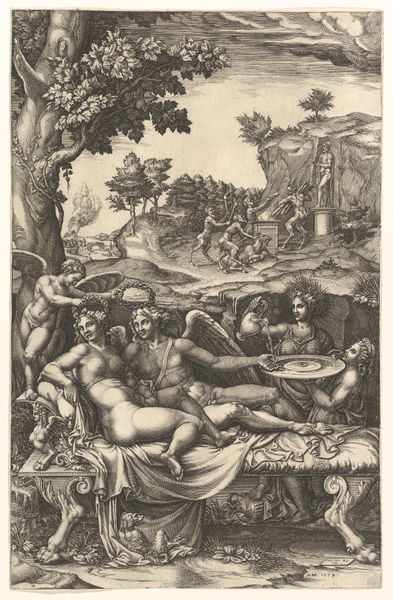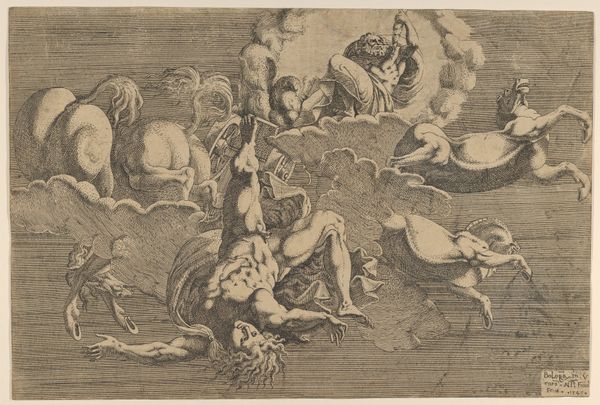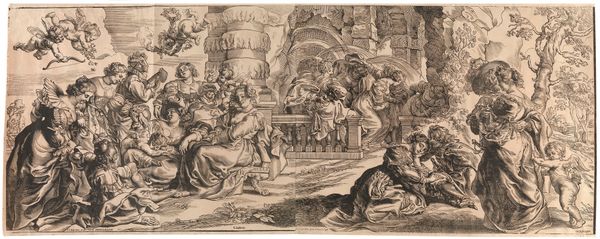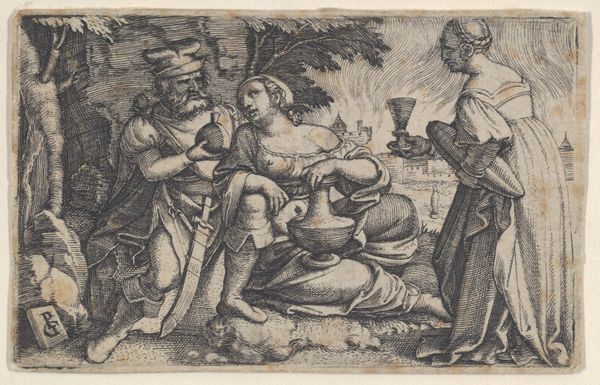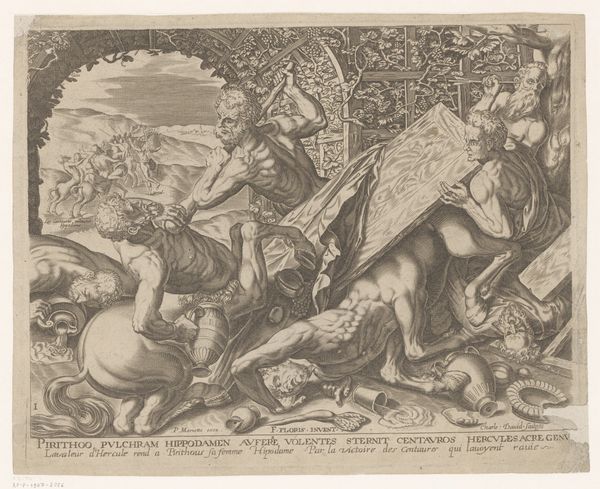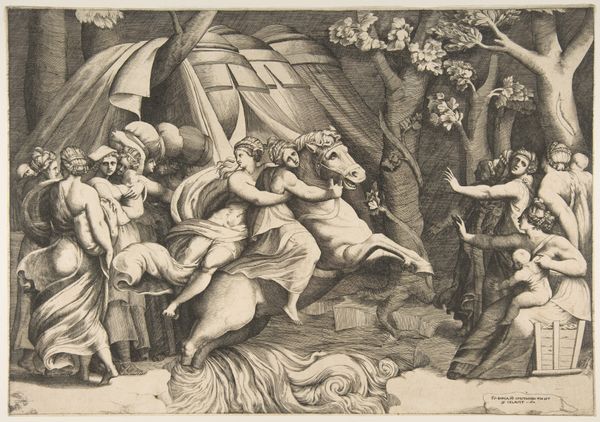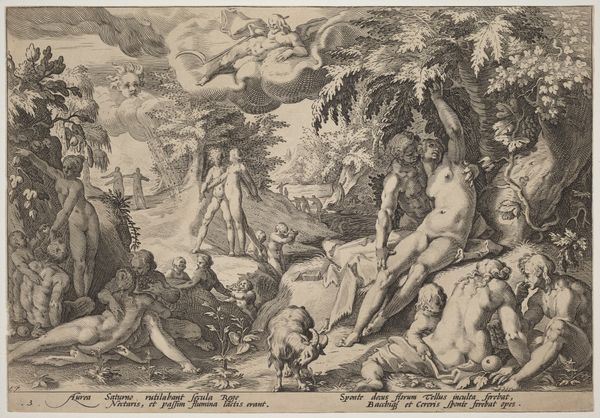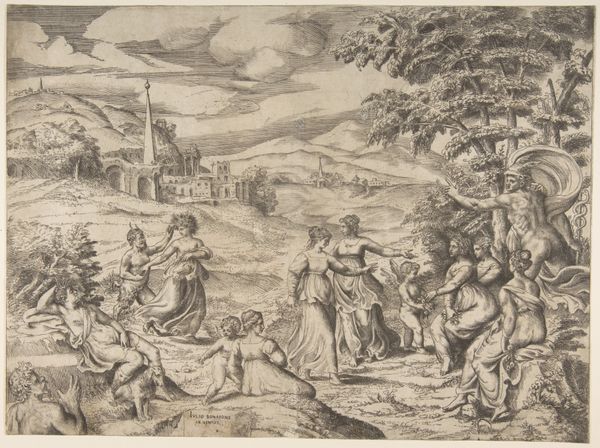
drawing, print, ink, engraving
#
portrait
#
drawing
#
narrative-art
#
pen drawing
# print
#
death
#
ink
#
history-painting
#
northern-renaissance
#
engraving
#
sword
Dimensions: sheet: 4 11/16 x 6 5/16 in. (11.9 x 16 cm)
Copyright: Public Domain
Editor: Here we have Lucas van Leyden’s engraving "Pyramus and Thisbe," created in 1514, on view at the Metropolitan Museum of Art. It's striking how detailed and precise the lines are, even in such a small print! What stands out to you about the piece? Curator: I’m immediately drawn to the technical skill evident in this engraving. Look at how van Leyden manipulates line to create textures and shadows! This wasn’t just about illustrating a classical narrative; it's about demonstrating the engraver’s virtuosity and the value of the printmaking craft itself. Consider the materials used, the copper plate, the inks – how these dictated the potential and limitations of the final image. What implications did printmaking have for society then? Editor: I hadn't really considered the labor involved in creating an engraving. The evenness of the lines is incredibly impressive now that I'm thinking of it being a process. Curator: Precisely! Engravings like this weren’t merely aesthetic objects. They were commodities, circulated among collectors, and demonstrated the skill and innovation within workshops. Notice, for example, the details on Pyramus’ armor. Does that specific type of armor communicate something to period viewers? Editor: Possibly a specific patron or a locale known for producing arms, making it a symbolic representation of social status tied to labor? Curator: Yes! And consider how prints democratized images. They made stories and artistic styles accessible to a wider audience than painted panels could. Do you think the level of detail in the fountain points to a broader cultural trend? Editor: Maybe it speaks to an interest in realistic representation or a competition between different artistic mediums? The more exact a print can be, the more its value increases. I'm starting to see the print more as an economic artifact rather than just a retelling of the Pyramus and Thisbe myth. Curator: Exactly! Seeing art as embedded in production and consumption transforms our understanding. Every choice - material, technique, subject - reflects a negotiation within its cultural and economic environment.
Comments
No comments
Be the first to comment and join the conversation on the ultimate creative platform.
